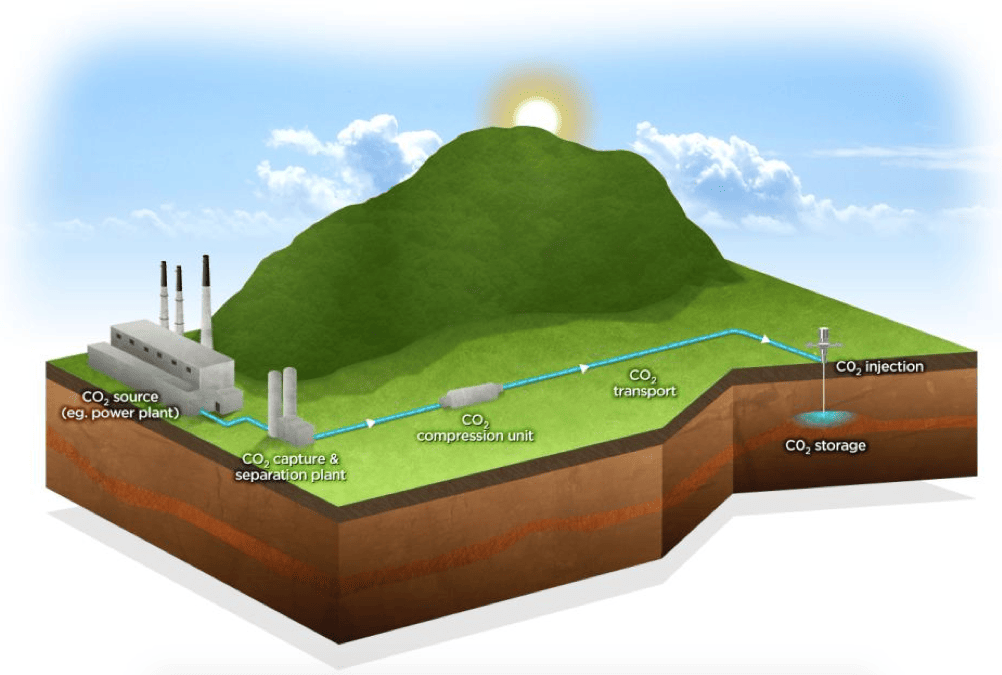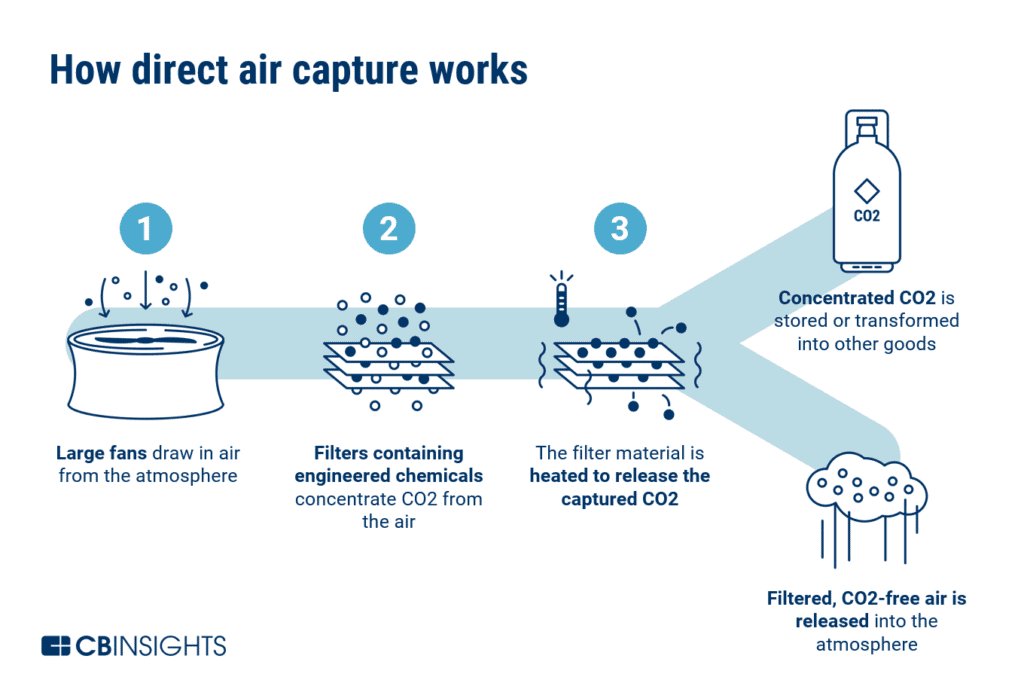Natural Gas Should Have No Place in Our Clean Energy Future
What is Carbon Capture?
The phrase “Carbon Capture” has been thrown around a lot lately as governments look to implement policies to address climate change and look to the future of energy production. It has been called into question by many in the environmental space for its effectiveness in reducing emissions while being hailed by industry as the solution to keep doing business as usual.
In making sense of it all, we must ask ourselves some fundamental questions. What is Carbon Capture? Is it really clean? And does it actually reduce planet-warming emissions?

A rendering of the Carbon Capture Utilization and Storage (CCUS) process (Credit: Cooperative Research Centre for Greenhouse Gas Technologies).
The Nuts and Bolts
There are two main operating carbon capture systems, Direct Air Capture (DAC) and Carbon Capture Utilization and Storage (CCUS). Direct Air Capture facilities pull carbon from the atmosphere anywhere they are built. The largest of these facilities is in Iceland, and they cost between $10 and $15 million to build. However, they only sequester emissions equivalent to 870 cars per year. Additionally, the plant in Iceland is only really viable due to the country’s easily accessible geothermal resources.

Diagram of the Direct Air Capture (DAC) process (Credit: CB Insights).
CCUS facilities serve as the primary source of carbon capture technology and are designed to operate at the source of planet-warming emissions such as fossil fuel power plants. They capture CO2 at power plants or manufacturing facilities before reaching smokestacks and divert that carbon into storage underground or into other uses.
A primary use of the carbon not stored is for enhanced oil recovery, which involves injecting carbon underground to enhance the recovery of oil in a depleted reservoir (Enhanced Oil Recovery). Another use is converting the carbon into usable products through chemical and manufacturing processes, like concrete, plastics, and more.
To date 79% of carbon captured from CCUS capacity has been used for Enhanced Oil Recovery (EOR), using the captured CO2 along with water to drill for more oil. There are serious concerns about what this all means for actually reducing emissions, and it is fair to say the Enhanced Oil Recovery process has been used as a lifeline for the fossil fuel industry to say they are reducing emissions and fulfilling “Net Zero goals” when they may not be having an impact.
Where does carbon capture fit in Michigan’s new energy laws?
Michigan’s latest clean energy laws establish a requirement for Michigan’s grid to be powered by 100% clean energy by 2040 (with interim renewable energy standards leading up to 2040). Unfortunately, the definitions in the law allow for natural gas with carbon capture to count as “clean energy,” thanks to heavy pressure from utilities and heavy industry. However, there is nothing in the law that says Michigan has to use gas any longer than necessary – the standards can act as a floor that we should do everything possible to exceed.
The new clean energy law recently enacted in Michigan requires natural gas plants to capture 90% of the carbon emissions they produce. These are some of the highest requirements for gas plants among states with similar standards in the country. There is reason to believe that demonstrating the ability to achieve a 90% capture rate – and showing that a 90% capture rate is cost-effective – will be difficult for energy utilities and will be a deterrent to retrofitting current power plants and/or building new power plants with CCUS, which is good news in the fight to reduce emissions.
The new Michigan law also prevents the use of CCUS for enhanced oil recovery. Preventing the sequestered carbon from any Michigan power plants from being used to drill more oil and gas is important to make sure that carbon capture isn’t incentivized in our state, but it’s also important to keep hydrocarbons in the ground as much as possible.
Carbon capture isn’t a dead ringer for emissions reduction
It is uncertain that carbon capture and storage permanently sequesters carbon dioxide; scientists have theorized that the carbon stored underground could leak, negating all of the emissions reductions. Even if the carbon is successfully stored permanently, the methane emissions from the fracking and piping process are enormous and will continue to worsen the climate crisis and threaten local water quality. Power plants are typically located in or nearby low-income communities that already are overburdened by pollution. Any new fossil fuel plants, with or without carbon capture, are unacceptable.
Additionally, CCUS is an energy-intensive process. It requires energy in and of itself to power the systems that capture the carbon. Michigan law does not require this energy to be clean. This means that the CCUS systems could be powered by dirty fossil fuels offsetting emissions reductions. Furthermore, CCUS is expensive. The money spent to keep fossil fuels running with carbon capture should go toward cheaper renewable options.
What’s next?
So despite all of this, why do utilities and fossil fuel companies want to use CCUS? The simple answer is that there is more profit to be extracted in the fossil fuel supply chain than in the clean energy sector. Once wind and solar power are established (with robust energy storage facilities) there are far fewer maintenance and development costs – and that means less profit for the fossil fuel industry. The cost of wind and solar has fallen in the last few years in a major way. The latest data show sources of clean energy, like wind and solar, are now cheaper than fossil fuels, like natural gas – and with the incentives and renewable standards in the recently enacted state and federal laws it is expected that wind and solar will continue to be the most cost competitive option for electricity generation in the future. Cheap wind and solar (plus storage) will hopefully prevent new gas plants (with CCUS) from being approved and constructed.
The fossil fuel industry knows it is dying and is setting its sights on CCUS as a lifeline to keep operating indefinitely. In future cases in front of the Michigan Public Service Commission, such as their all-important Integrated Resource Plan decisions, the Commission must reject natural gas expansion or it will continue to worsen the climate crisis and threaten the health of Michiganders. With Michigan’s new energy laws, and the falling costs of clean energy, we are on solid grounding to make sure that happens.

